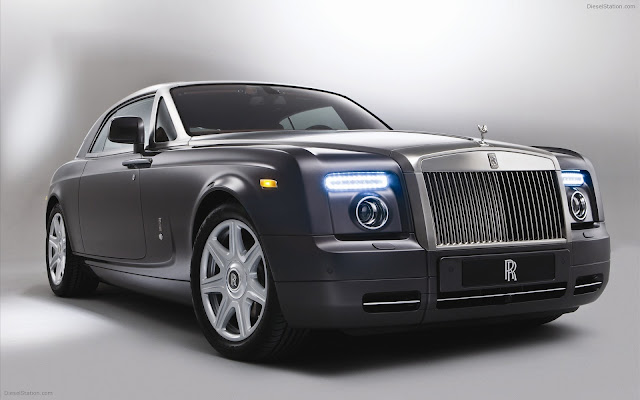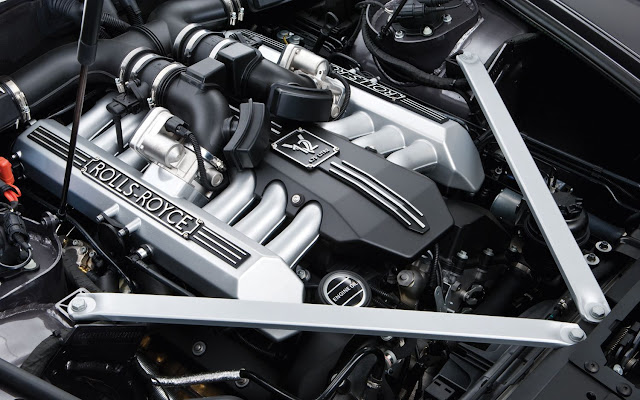Rolls-Royce Limited was a renowned British car and, from 1914 on, aero-engine manufacturing company founded by Charles Stewart Rolls and Henry Royce on 15 March 1906 as the result of a partnership formed in 1904.
History
In 1884, Henry Royce started an electrical and mechanical business. He made his first car, a two-cylinder Royce 10, in his Manchesterfactory in 1904, and was introduced to Charles Rolls at the Midland Hotel in Manchester Co.
In spite of his preference for three or four cylinder cars, Rolls was impressed with the Royce 10, and in a subsequent agreement of 23 December 1904 agreed to take all the cars Royce could make. There would be four models:
- a 10 hp (7.5 kW), two-cylinder model selling at £395 (£31,550 as of 2012),[1]
- a 15 hp (11 kW) three-cylinder at £500 (£39,940 as of 2012),[1]
- a 20 hp (15 kW) four-cylinder at £650 (£51,930 as of 2012),[1]
- a 30 hp (22 kW) six-cylinder model priced at £890 (£71,100 as of 2012),[1]
All would be badged as Rolls-Royces, and be sold exclusively by Rolls. The first Rolls-Royce car, the Rolls-Royce 10 hp, was unveiled at theParis Salon in December 1904.
Rolls-Royce Limited was formed on 15 March 1906, by which time it was apparent that new premises were required for production of cars. After considering sites in Manchester, Coventry, Bradford and Leicester, it was an offer from Derby's council of cheap electricity that resulted in the decision to acquire a 12.7 acres (51,000 m2) site on the southern edge of that city. The new factory was largely designed by Royce, and production began in early 1908, with a formal opening on 9 July 1908 by Sir John Montagu. The investment in the new company required further capital to be raised, and on 6 December 1906 GBP 100,000 (£7,971,060 as of 2012),[1] of new shares were offered to the public. In 1907, Rolls-Royce bought out C.S. Rolls & Co.
During 1906 Royce had been developing an improved six cylinder model with more power than the 30hp. Initially designated the 40/50 hp, this was the company's first all-new model.[3] In March 1908 Claude Johnson, Commercial Managing Director and sometimes described as the hyphen in Rolls-Royce[4], succeeded in persuading Royce and the other directors that Rolls-Royce should concentrate exclusively on the new model, and all the earlier models were duly discontinued. After the introduction of the Phantom model in 1925 this 40/50 model was referred to as the Silver Ghost. The new 40/50 was responsible for the company's early reputation with over 6,000 built. In 1921, the company opened a second factory in Springfield, Massachusetts in the United States
After the First World War, Rolls-Royce successfully avoided attempts to encourage the British car manufacturers to merge. Faced with falling sales of the 40/50 (later known as Silver Ghost) the company introduced the smaller, cheaper Twenty in 1922, effectively ending the one-model policy followed since 1908.
In 1931 Rolls-Royce acquired the much smaller rival car maker Bentley after its finances failed to weather the onset of the Great Depression. From soon after World War II until 2002 standard Bentley and Rolls-Royce cars were often identical apart from the radiator grille and minor details.
In 1933, the colour of the Rolls-Royce radiator monogram was changed from red to black because the red sometimes clashed with the coachwork colour selected by clients, and not as a mark of respect for the passing of Royce as is commonly stated.
Rolls-Royce and Bentley car production moved to Crewe in 1946 where they began to assemble complete cars (the new standard steel models) for the first time. Previously they had built only the chassis, leaving the bodies to specialist coachbuilders.
Cars
* 1904-1906 10 hp
* 1905-1905 15 hp
* 1905-1908 20 hp
* 1905-1906 30 hp
* 1905-1906 V-8
* 1906-1925 40/50 Silver Ghost
* 1922-1929 Twenty
* 1925-1929 40/50 Phantom
* 1929-1936 20/25
* 1929-1935 Phantom II
* 1936-1938 25/30
* 1936-1939 Phantom III
* 1939-1939 Wraith
* 1949-1955 Silver Wraith
* 1949-1955 Silver Dawn
* 1950-1956 Phantom IV
* 1955-1966 Silver Cloud
* 1959-1968 Phantom V
* 1965-1980 Silver Shadow
* 1968-1991 Phantom VI
* 1971-1996 Corniche I-V
Bentley models (from 1933)
* 1933-1937 Bentley 3½ L
* 1936-1939 Bentley 4¼ L
* 1940-1940 Bentley 4¼ L Mk V
* 1975-1986 Camargue
* 1980-1998 Silver Spirit/Silver Spur
Bentley models were produced mostly in parallel with the above cars. The Bentley Continental coupés (produced in various forms from the mid-1950s to the mid-1960s) did not have Rolls-Royce equivalents. Very expensive Rolls-Royce Phantom limousines were also produced.
* 1998-2002 Silver Seraph
* 2000-2002 Corniche V
* 2003 Phantom * 2007 Phantom Drophead Coupé *2008 Phantom Coupé
Rolls-Royce In Popular Culture
Rolls-Royces have often been used in popular culture as a stereotype of wealthy people, particularly millionaires. Examples include the one driven by the eccentric millionaire in the film, "City Lights " (1931), starring Charlie Chaplin . In the film "One Hundred and One Dalmatians ", the villainess Cruella de Vil drives a long, red Rolls-Royce.









































No comments:
Post a Comment